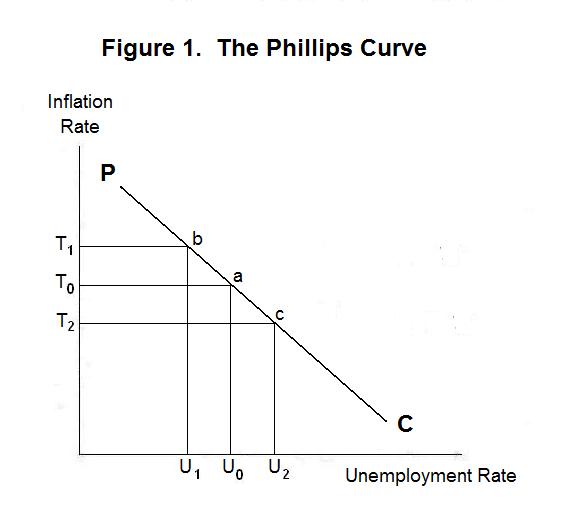

The average tariff levels for the major GATT participants were about 22% in 1947, but were 5% after the Uruguay Round in 1999. The GATT was first discussed during the United Nations Conference on Trade and Employment and was the outcome of the failure of negotiating governments to create the International Trade Organization . It was signed by 23 nations in Geneva on 30 October 1947, and was applied on a provisional basis 1 January 1948. It remained in effect until 1 January 1995, when the World Trade Organization was established after agreement by 123 nations in Marrakesh on 15 April 1994, as part of the Uruguay Round Agreements. The WTO is the successor to the GATT, and the original GATT text is still in effect under the WTO framework, subject to the modifications of GATT 1994.
As the GATT increased the number of middle-class consumers throughout the world, there was an increased demand for trade with developed countries. GATT served as an important international forum for carrying on negotiations on tariffs. In short, members of GATT agree to reduce trade barriers and to eliminate discrimination in international trade so that, multilateral and free trade may be promoted, leading to wider dimensions of world trade and prosperity. Their main achievement at the time, however, was seen to be the adoption of Part IV of the GATT, which absolved them from according reciprocity to developed countries in trade negotiations. In the view of many developing countries, this was a direct result of the call at UNCTAD I for a better trade deal for them.
This was to be an ambitious effort to make globalization more inclusive and help the world’s poor, particularly by slashing barriers and subsidies in farming. The initial agenda comprised both further trade liberalization and new rule-making, underpinned by commitments to strengthen substantial assistance to developing countries. A comparable international institution for trade, named the International Trade Organization was successfully negotiated.
Marketing
Agriculture had remained generally excluded from the GATT jurisdiction in the earlier rounds. Most of the countries, both developed and less-developed, had jealously shielded their agriculture from foreign competition through tariffs, quota, subsidies, health regulations etc. The elaborate protective domestic agriculture support programmes were considered too restrictive and responsible for high costs to consumers. In addition, these were found to interfere with the international specialisation of resources and were likely to cause serious trade disputes.
The most important requirement was that each member would confer most favored nation status to every other member. The agreement excluded the special tariffs among members of the British Commonwealth and customs unions. It permitted tariffs if their removal would cause serious injury to domestic producers. The purpose of the GATT was to eliminate harmful trade protectionism, which likely contributed to the 66% reduction of global trade during the Great Depression.
Reduction of tariff was on reciprocal and mutually advantageous basis. Article 11 of the GATT provided that all concessions granted by contracting parties must be entered in a schedule of concessions. Once a concession was included in the schedule of concessions, it could not be withdrawn except under specified circumstances. Before the GATT role of gatt was formed, the tariff of each country was very high. The result of setting high tariff was because after the Second World War the economy of every country was suffering from depression. So the countries had to set high tariffs to protect their domestic producers and manufactures so that they could also protect their currency’s value.
Governments cede some level of control to an international agreement. Robert Kelly is managing director of XTS Energy LLC, and has more than three decades of experience as a business executive. He is a professor of economics and has raised more than $4.5 billion in investment capital. Trade negotiations under GATT From 1947 to 2001, GATT has organized 12 trade negotiations. The following table shows various negotiations of GATT and WTO since 1947.

In addition, the negotiations on chemicals led to a provisional agreement on the abolition of the American Selling Price . This was a method of valuing some chemicals used by the noted States for the imposition of import duties which gave domestic manufacturers a much higher level of protection than the tariff schedule indicated. The role of GATT was to promote trade liberalization and build strong multilateral relationships between the member countries. Trade liberalization is the process of removing trade barriers to allow the free exchange of goods or services between countries. A trade policy is a series of agreements and guidelines developed by the government to ensure continuous trade practices with foreign countries. Let us first understand trade before diving into the GATT Agreement.
The council has 10 committees that address subjects including market access, agriculture, subsidies, and anti-dumping measures. GATT played a hero’s role in expanding the world trade in the latter half of the 20th century. 125 nations had already become signatories to GATT when it was replaced by the WTO in 1995. The Uruguay Round of trade negotiations, which had started in September 1986, continued to drag on. The GATT dispute settlement mechanism was found to be very slow and cumbersome.
The organization officially commenced on 1 January 1995 under the Marrakech Agreement, replacing the General Agreement on Tariffs and Trade , which commenced in 1948. Most of the issues that the WTO focuses on derive from previous trade negotiations, especially from the Uruguay Round (1986–1994). The GATT recognized that tariffs are often an important obstacle to international trade. Hence, the GATT would encourage negotiations for tariff reduction to be conducted on a reciprocal and mutually advantageous basis, taking into consideration the varying needs of individual contracting parties.
What Is the General Agreement on Tariffs and Trade (GATT)?
GATT emerged as the singular permanent international arrangement having specific widely accepted rules of behaviour concerning international trade and tariffs. As the first worldwide multilateral free trade agreement, the GATT governed a significant portion of international trade between January 1, 1948, and January 1, 1995. The agreement ended when it was replaced by the more robust World Trade Organization . Reduced tariffs and established new regulations aimed at controlling the proliferation of non-tariff barriers and voluntary export restrictions. There has been argument ever since whether this symbolic gesture was a victory for them, or whether it ensured their exclusion in the future from meaningful participation in the multilateral trading system. In the end, the result was an average 35% reduction in tariffs, except for textiles, chemicals, steel and other sensitive products; plus a 15% to 18% reduction in tariffs for agricultural and food products.
- Until the formation of an organization, a group of 23 countries formed a multilateral trade agreement known as GATT.
- This was not addressed by GATT as it did not address the trade in services between Nations..
- More than 50 nations negotiated ITO and organising its founding charter, but after the withdrawal of the United States these negotiations collapsed.
As far as quantitative restrictions are concerned, they should be administered without favor. The agreement helped in securing the interests of all the nations at the global level by bringing in rules to ensure transparency in trade relations and eliminating all the trade discrimination. GATT aims to reduce tariffs as Tariffs played the main role in trade protection and negotiation. Also, GATT seeks to ensure transparency in the trade relationship between the nations. The seventh round of the general trade talks took place in 1973 – 1979.
Its principles and the many trade agreements reached under its auspices were adopted by the WTO. The slow pace of international trade talks, however, is understandable, even sensible. GATT often set up separate trading rules for certain industries, like agriculture, and separate trading rules for certain countries, like the low-income countries.
GATT (General Agreement Of Tariffs And Trade)- Functions, Objectives, Principles, Challenges!
By registering you get free access to our website and app which will help you to super-charge your learning process. The exchange of commodities and services between two people or a country is known as trade. PreserveArticles.com is an online article publishing site that helps you to submit your knowledge so that it may be preserved for eternity.
Indian pharmacists should try to develop Ayurvedic drugs as an alternative form of medicine. Under the GATT agreement then India can hope to increase her exports of generic, tropical and ayurvedic drugs to many countries. This obviously calls for a rational and pragmatic drug policy on the part of the government.
All the articles you read in this site are contributed by users like you, with a single vision to liberate knowledge. Further, on account of the anti-dumping strategy and rules adopted in the URT, India’s local chemical industry can be protected. Similarly, using the same clause the US Government can also prevent India’s textile exports when its quota region is over. The indigenous pharmaceutical industry following the process patent will be in an adverse position. Pranab Mukherjee, then Union Commerce Minister, however, felt that the government could deal with the situation of rising drug prices by instituting price control, since the government retained such right.
What were the advantages and disadvantages of GATT?
Other main points had been left for additional negotiation to be accomplished by the end of 2010. Unlike developed countries, creating nations don’t have the negotiating power available in the market and only have to comply with the worth that using by these developed country. According to Mike Moore, the secretary common of WTO, creating nations demanded improvements in market entry for agricultural merchandise of actual and potential interest to them. General Agreement on Tariffs and Trade , which was created in 1947 in the expectation that it might soon be replaced by a specialised agency of the United Nations to be referred to as the International Trade Organization .
The U.S.A. has been since long insisting upon proper safeguards to the intellectual property rights of the researches in the advanced countries on the international plane. The Eighth Round of the GATT addressed itself to this matter related to patents, copyrights etc. It is true that the Tokyo Round extended the scope of GATT regulations to the non-tariff barriers. But the total outcome was designed to meet the interests of the United States, the EEC and other advanced nations. The tariff reduction agreed by the leading countries such as the USA, the EEC and Japan, on an average, was of the magnitude of 31 percent, 27 percent and 28 percent respectively. The negotiated tariff reduction by the contracting parties was to be phased over 8 year commencing from 1980.
As of July 2012, there were various negotiation groups in the WTO system for the current agricultural trade negotiation which is in the condition of stalemate. The first meeting was in Geneva, Switzerland, and included 23 countries. The members established tax concessions touching more than US$10 billion of trade around the globe. The General Agreement on Tariffs and Trade is a portmanteau for a sequence of worldwide trade negotiations which were held in a complete of nine rounds between 1947 and 1995. The GATT was first conceived within the aftermath of the Allied victory in the Second World War on the 1947 United Nations Conference on Trade and Employment , at which the International Trade Organization was one of many concepts proposed.
The purpose and benefit of GATT
The Uruguay Round has enlarged the scope of GATT to include services and agriculture. This clause is to be adopted to avoid discrimination in international trade. The clause implies that each country shall be treated as the most favoured nation.
In the absence of an international organization for trade, the GATT would over the years „transform itself“ into a de facto international organization. On January 1, 1995, the World Trade Organization was found to replace GATT after the eighth round of GATT multilateral negotiation. The most-favored-nation clause requires countries to offer the same trade terms to all trading partners, with notable exceptions under WTO rules.